Do you have a question about the Panasonic PT-LC50E and is the answer not in the manual?
Compliance statement for Class B digital device according to FCC Rules.
Instructions for FCC compliance, use of shielded cables and grounded power.
Instructions for CE Mark compliance, use of shielded cables and earthed power.
Safety instructions regarding the 3-pin mains plug and fuse for UK users.
Details on mains lead wire colors and connection to earth terminal.
Highlights the projector's portability for presentations.
Describes the integrated stand for easy projection angle adjustment.
Details flexible angle adjustment with a detachable swivel stand.
Enables automatic image adjustment, including keystone correction.
Lists compatible personal computer types for RGB input.
Supports progressive DVD and HDTV signals via component input.
Supports various international broadcast video signal formats.
Allows image enlargement up to 5x and pausing the screen.
Features on-board card type wireless remote for basic operations.
Allows selection of display language from multiple options.
Operates with a wide voltage range (AC 100V - 240V).
Provides access to electronic manual content via CD-ROM.
Allows selection between Dynamic and Natural image quality modes.
Optional remote with built-in wireless mouse and laser pointer.
Ensures airflow does not affect viewers and prevents light leakage.
Identifies external parts and labels on the projector's top, front, back, and bottom.
Details the buttons and indicators on the projector's control panel.
Illustrates and explains the various input/output connectors on the projector.
Diagram showing the buttons and functions of the remote control unit.
Step-by-step guide for inserting or replacing the remote control battery.
Explains the effective distance and angles for remote control operation.
Illustrates connecting the projector to DVD players and VCRs.
Shows how to connect the projector to a personal computer via VGA and audio.
Details connecting component signals using a D-sub15-BNC5 adaptor cable.
Explains front and rear projection setups for optimal viewing.
Provides guidance on screen size, throw distance, and projector height.
Steps for adjusting the zoom and focus rings for optimal picture clarity.
Procedure for adjusting Red, Green, and Blue levels for color balance.
How to reset menu settings to their original factory default values.
Steps to change projection mode between front and rear settings.
Instructions to set the screen aspect ratio to 4:3 or 16:9.
Guides changing S-VIDEO/VIDEO or DTV signals to 16:9 wide screen.
Instructions for adjusting projection angle with simple or swivel stands.
How to adjust the audio volume using the remote control buttons.
Switching between a still (frozen) and moving picture display.
Muting picture and sound simultaneously using the SHUTTER button.
Procedure to adjust the horizontal position of the projected image.
Steps to select between Dynamic and Natural image quality modes.
How to adjust color, tint, brightness, contrast, and sharpness.
Procedure for adjusting the red color level for white balance.
How to manually select between RGB and YPBPR input signals.
How to disable the on-screen display of the current input signal.
Procedure to enable or disable the auto lamp shut-off power saving feature.
How to turn off the enlargement function for low-resolution signals.
Steps to correct trapezoidal distortion using the KEYSTONE button.
How to choose the display language from seven available options.
How to display input signal type and lamp runtime information.
Explains status codes indicating problems and required actions.
Procedure for cleaning or replacing the projector's air filter.
Lists the supported RGB signal formats and their specifications.
Details supported DTV and Personal Computer signal formats.
Specifies supported Component (YPBPR) signal formats.
Lists supported S-VIDEO and VIDEO signal formats and their frequencies.
How to select the correct S-VIDEO/VIDEO signal format.
Compliance statement for Class B digital device according to FCC Rules.
Instructions for FCC compliance, use of shielded cables and grounded power.
Instructions for CE Mark compliance, use of shielded cables and earthed power.
Safety instructions regarding the 3-pin mains plug and fuse for UK users.
Details on mains lead wire colors and connection to earth terminal.
Highlights the projector's portability for presentations.
Describes the integrated stand for easy projection angle adjustment.
Details flexible angle adjustment with a detachable swivel stand.
Enables automatic image adjustment, including keystone correction.
Lists compatible personal computer types for RGB input.
Supports progressive DVD and HDTV signals via component input.
Supports various international broadcast video signal formats.
Allows image enlargement up to 5x and pausing the screen.
Features on-board card type wireless remote for basic operations.
Allows selection of display language from multiple options.
Operates with a wide voltage range (AC 100V - 240V).
Provides access to electronic manual content via CD-ROM.
Allows selection between Dynamic and Natural image quality modes.
Optional remote with built-in wireless mouse and laser pointer.
Ensures airflow does not affect viewers and prevents light leakage.
Identifies external parts and labels on the projector's top, front, back, and bottom.
Details the buttons and indicators on the projector's control panel.
Illustrates and explains the various input/output connectors on the projector.
Diagram showing the buttons and functions of the remote control unit.
Step-by-step guide for inserting or replacing the remote control battery.
Explains the effective distance and angles for remote control operation.
Illustrates connecting the projector to DVD players and VCRs.
Shows how to connect the projector to a personal computer via VGA and audio.
Details connecting component signals using a D-sub15-BNC5 adaptor cable.
Explains front and rear projection setups for optimal viewing.
Provides guidance on screen size, throw distance, and projector height.
Steps for adjusting the zoom and focus rings for optimal picture clarity.
Procedure for adjusting Red, Green, and Blue levels for color balance.
How to reset menu settings to their original factory default values.
Steps to change projection mode between front and rear settings.
Instructions to set the screen aspect ratio to 4:3 or 16:9.
Guides changing S-VIDEO/VIDEO or DTV signals to 16:9 wide screen.
Instructions for adjusting projection angle with simple or swivel stands.
How to adjust the audio volume using the remote control buttons.
Switching between a still (frozen) and moving picture display.
Muting picture and sound simultaneously using the SHUTTER button.
Procedure to adjust the horizontal position of the projected image.
Steps to select between Dynamic and Natural image quality modes.
How to adjust color, tint, brightness, contrast, and sharpness.
Procedure for adjusting the red color level for white balance.
How to manually select between RGB and YPBPR input signals.
How to disable the on-screen display of the current input signal.
Procedure to enable or disable the auto lamp shut-off power saving feature.
How to turn off the enlargement function for low-resolution signals.
Steps to correct trapezoidal distortion using the KEYSTONE button.
How to choose the display language from seven available options.
How to display input signal type and lamp runtime information.
Explains status codes indicating problems and required actions.
Procedure for cleaning or replacing the projector's air filter.
Lists the supported RGB signal formats and their specifications.
Details supported DTV and Personal Computer signal formats.
Specifies supported Component (YPBPR) signal formats.
Lists supported S-VIDEO and VIDEO signal formats and their frequencies.
How to select the correct S-VIDEO/VIDEO signal format.
| Resolution | 800 x 600 (SVGA) |
|---|---|
| Lamp Life | 2000 hours |
| Display Technology | LCD |
| Aspect Ratio | 4:3 |
| Projection Size | 30 - 300 inches |
| Lamp Type | UHM |
| Lamp Life (Eco mode) | 3000 hours |
| Lamp | UHM |
| Input Ports | S-Video, Composite Video |
| Brightness | 2000 ANSI Lumens |
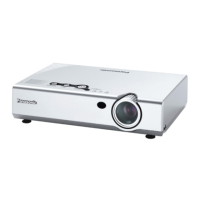
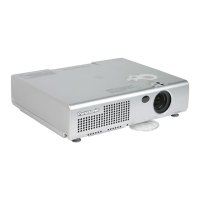
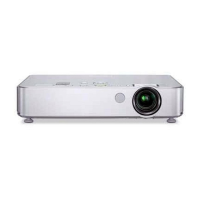
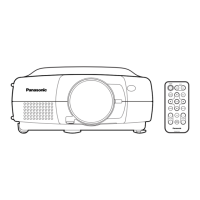


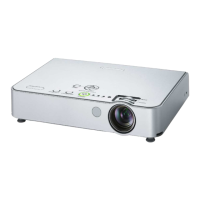
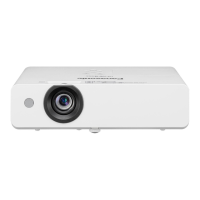
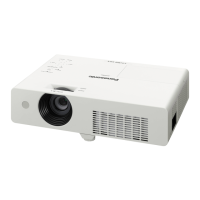
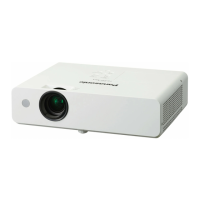
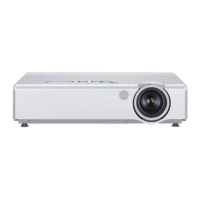

